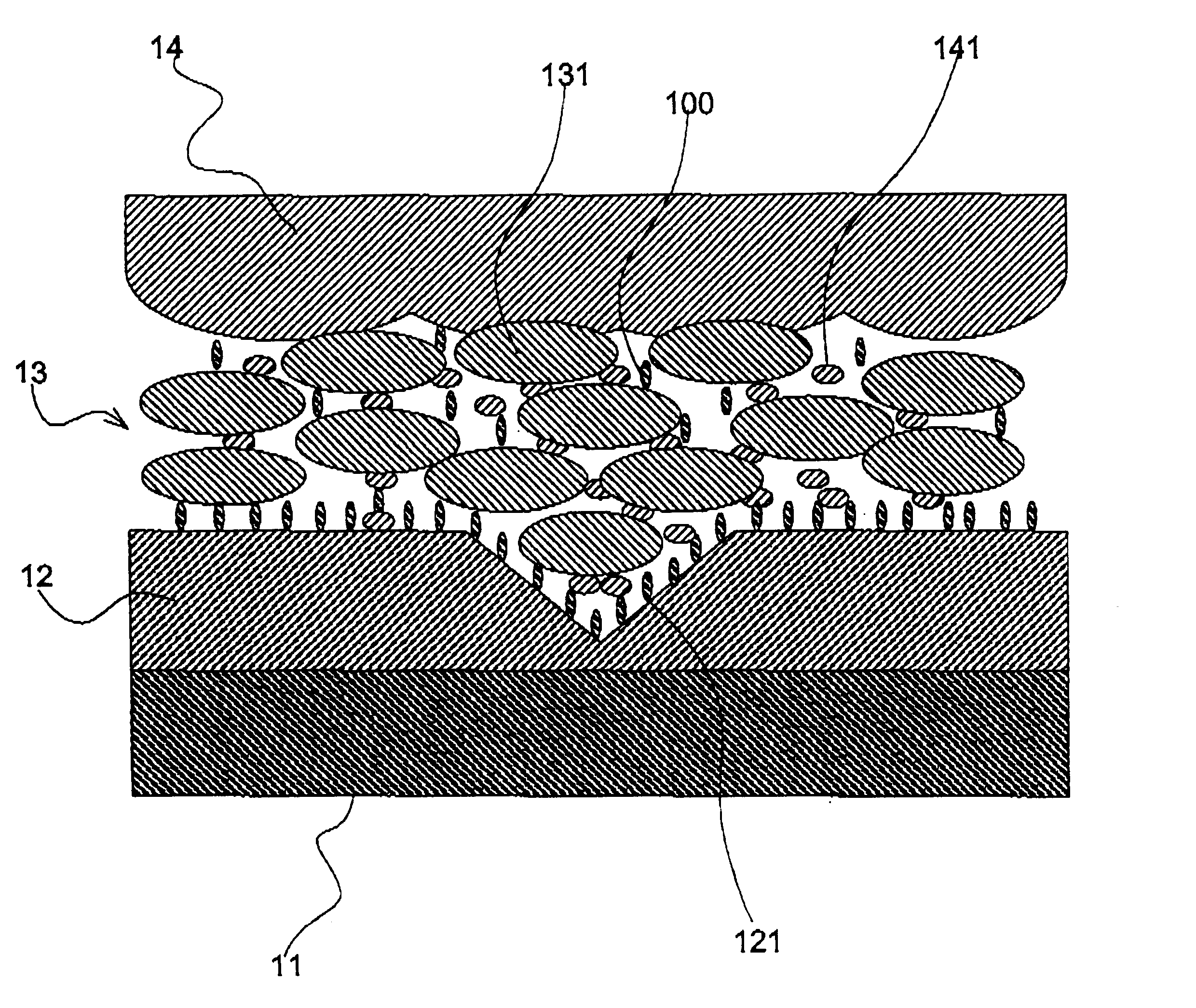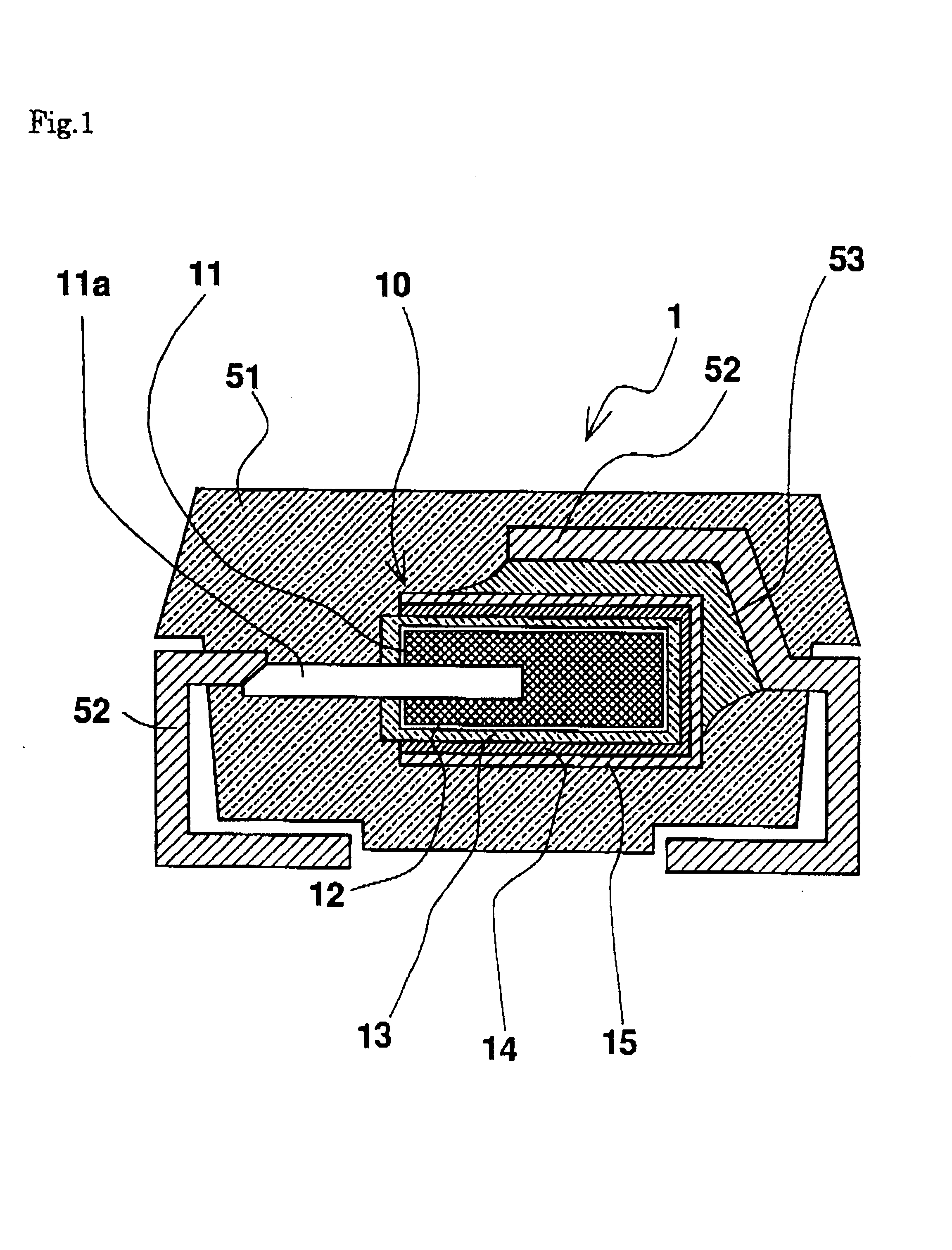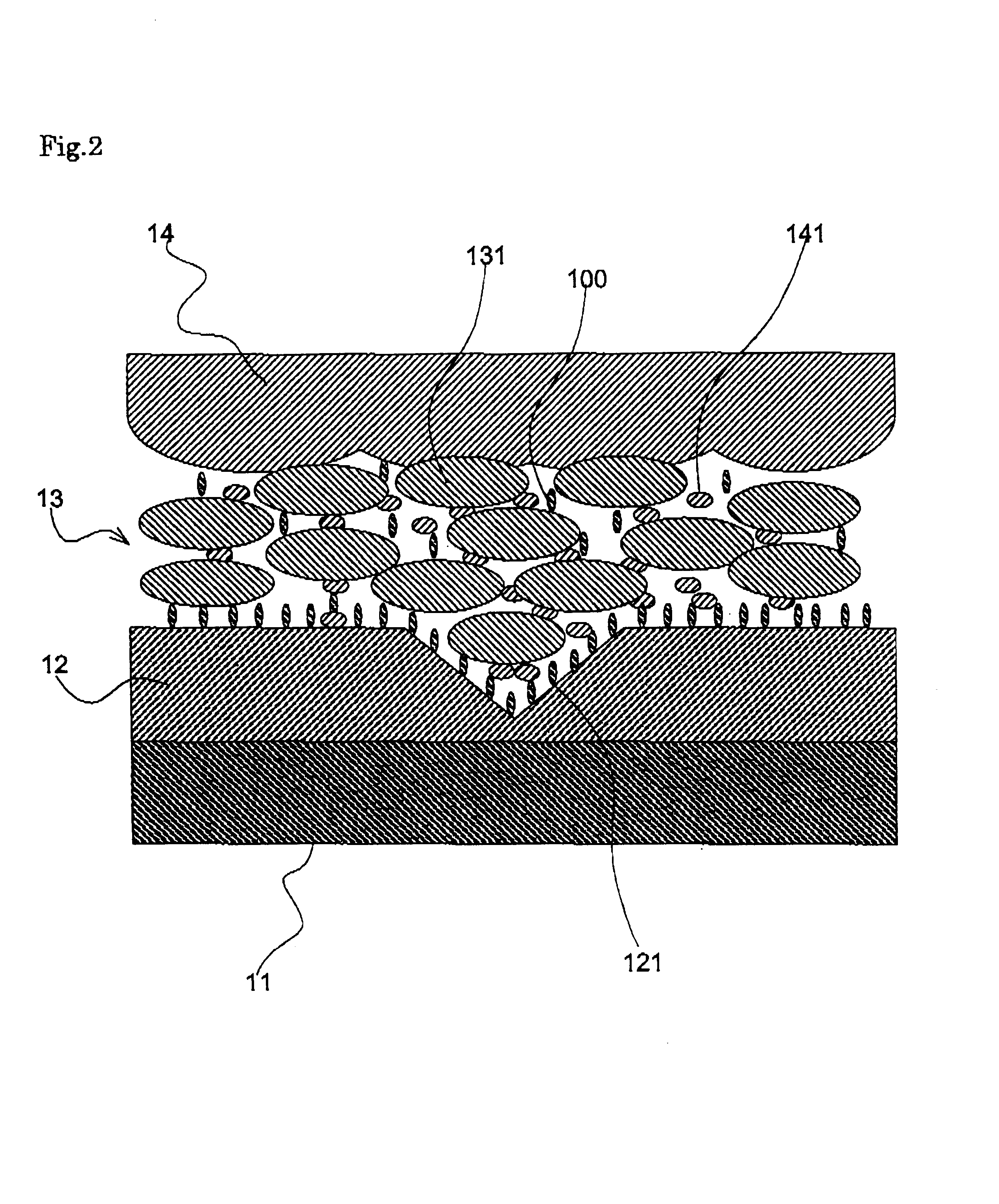Solid electrolytic capacitor, and method for preparing the same
a solid electrolytic capacitor and electrolyte layer technology, applied in the direction of capacitor dielectric layers, electrical apparatus casings/cabinets/drawers, coupling device connections, etc., can solve the problems of lowering the electrical conductivity of the electrolyte layer, and affecting the performance of the capacitor
- Summary
- Abstract
- Description
- Claims
- Application Information
AI Technical Summary
Benefits of technology
Problems solved by technology
Method used
Image
Examples
example 1
A tantalum powder in which an element lead wire made of tantalum is partially inserted and which has a CV value of 50 kcv / g was charged into a pelleter and pressed, the pressed product was sintered at a temperature of 1,350degreeC. in a vacuum atmosphere of 10.sup.-4 Pa or higher vacuum to obtain a porous anode body having a parallelepipedonal shape.
The anode body was soaked in an aqueous solution of 0.6% by volume phosphoric acid and subjected to anodic oxidation with application of a voltage of 33.7 volt for 180 minutes to thereby form a dielectric layer having a large number of pores.
The resulting pellet was soaked in an oxidizing agent solution prepared by dissolving 400 g of ferric benzenesulfonate in 1000 g of an alcohol at room temperature for 5 minutes, and then dried.
Subsequently, the resulting pellet was soaked in an aqueous solution which contained 5% by weight of graphite particles having an average diameter of 1.0.times.10.sup.-5 m and 5 to 7% by volume of pyrrole as a ...
PUM
| Property | Measurement | Unit |
|---|---|---|
| sizes | aaaaa | aaaaa |
| sizes | aaaaa | aaaaa |
| size | aaaaa | aaaaa |
Abstract
Description
Claims
Application Information
 Login to View More
Login to View More - R&D
- Intellectual Property
- Life Sciences
- Materials
- Tech Scout
- Unparalleled Data Quality
- Higher Quality Content
- 60% Fewer Hallucinations
Browse by: Latest US Patents, China's latest patents, Technical Efficacy Thesaurus, Application Domain, Technology Topic, Popular Technical Reports.
© 2025 PatSnap. All rights reserved.Legal|Privacy policy|Modern Slavery Act Transparency Statement|Sitemap|About US| Contact US: help@patsnap.com



